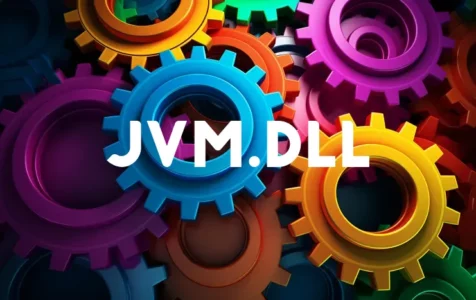What is the JVM DLL?
When an application on a Windows machine requires the execution of Java code, it calls upon a vital component known as the JVM DLL. The file in question, jvm.dll, is part of the Java Runtime Environment (JRE) or the Java Development Kit (JDK). The acronym JVM stands for Java Virtual Machine, and this dynamic link library (DLL) acts as the interface, enabling Java programs to operate seamlessly within the Windows operating system.
Can JVM DLL be a virus or malware?
Like any file on your system, the jvm.dll could potentially become compromised by a virus or malware. However, the original, untampered version of jvm.dll is entirely safe. Be cautious when downloading DLL files from the internet to replace a missing or corrupted jvm.dll, as these files can be malicious or infected. Always ensure that your antivirus software is up to date and functional to protect your system from such risks.
Common issues associated with JVM DLL
Errors related to jvm.dll may occur for various reasons. A typical message like “jvm.dll not found” or “jvm.dll is missing” could mean that the file has been deleted, misplaced, or corrupted, potentially by malicious software. Such errors often prevent Java-based applications from launching correctly.
How to fix issues with JVM DLL
To address problems with jvm.dll, you should follow a structured troubleshooting process. Here are step-by-step instructions to help you fix these issues:
Expert Tip: For smoother PC performance, consider using a PC optimization tool. It handles junk files, incorrect settings, and harmful apps. Make sure it's right for your system, and always check the EULA and Privacy Policy.
Special offer. About Outbyte, uninstall instructions, EULA, Privacy Policy.
1. Verify Your Java Installation: Ensure that you have Java installed on your machine. You can download the latest version from the official Java website. During the installation, ensure that you select the correct version (32-bit or 64-bit) matching your operating system’s architecture.
2. Set the JAVA_HOME Environment Variable: Some applications require the JAVA_HOME environment variable to be set to function correctly. You can set this variable to point to the directory where Java is installed.
3. Check Your System’s Architecture: Be mindful of the architecture compatibility between your operating system, Java installation, and applications. If you’re running a 64-bit operating system, you should install the 64-bit version of Java and vice versa.
4. Update Your System’s PATH: Include the path to the Java bin directory (where jvm.dll resides) in the system’s PATH environment variable.
5. Register the DLL File: If needed, you can attempt to register the jvm.dll file manually using the `regsvr32` command in an elevated command prompt. However, note that this might not be applicable for jvm.dll as it is not a typical ActiveX control DLL that requires registration.
6. Perform a System File Check: Run the Windows System File Checker tool to fix corrupted system files that may be impacting the JVM DLL.
7. Reinstall Java: If the above steps fail, consider uninstalling Java completely and then reinstall it. Remember to remove all previous Java installations from your system before a fresh install.
8. Use Dedicated Software Tools: If manual troubleshooting is difficult, consider using a dedicated software tool to repair or replace the missing or corrupted jvm.dll file.
Remember that while manual downloading of DLL files can sometimes resolve the issue, it carries risks, especially if sourced from unreliable websites. It’s more secure to rely on Java’s official installer or dedicated repair tools that are built for this purpose.
If you’ve exhausted these options and still encounter issues, online community forums and support platforms can be a valuable resource. Many users share their experiences with similar problems, providing insights and solutions that could effectively address your concerns.
Summary
The jvm.dll file is essential for running Java applications on Windows. While encountering errors with this file can be daunting, they can typically be resolved through careful troubleshooting. By reinstalling Java, setting environment variables correctly, and ensuring system file integrity, most JVM DLL problems can be fixed. Always prioritize security by using trusted sources for software installation and be cautious of potential malware disguised as DLL files.
